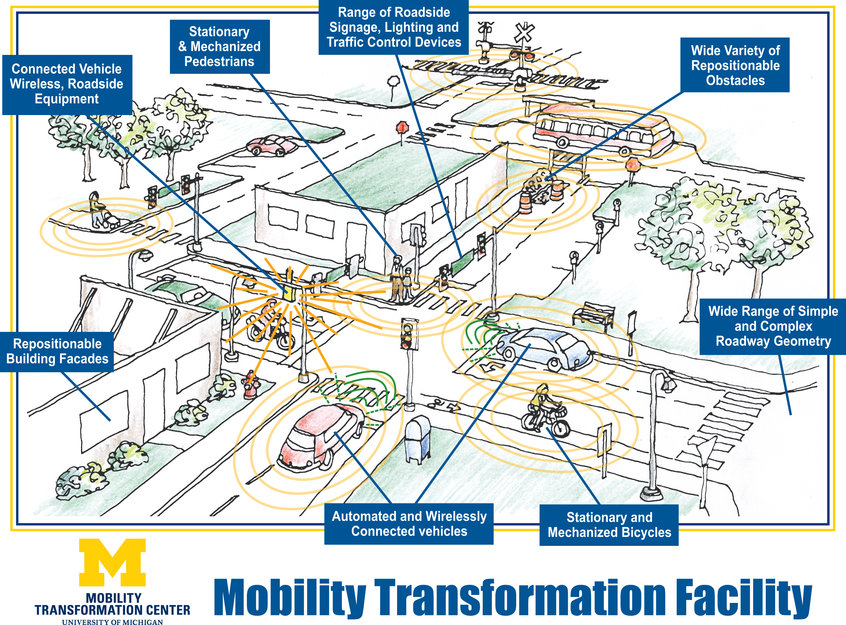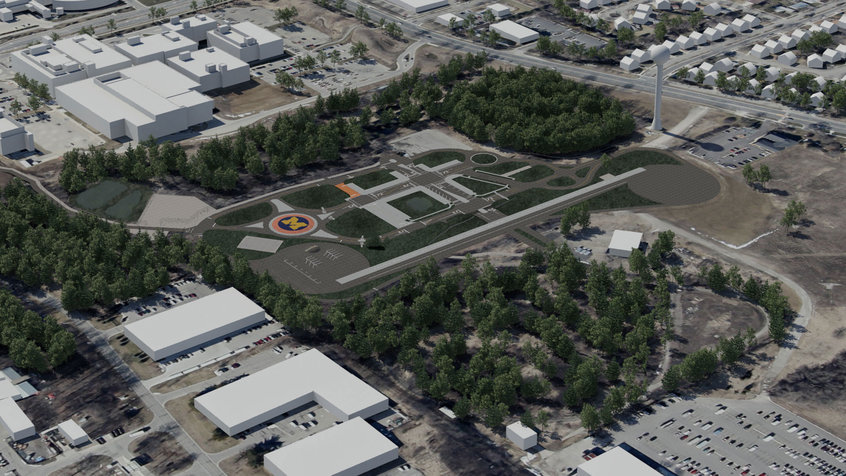While the world is still getting used to the idea of driverless cars, researchers in the US are building a bit of fake city to test how swarms of them would handle themselves in real-life scenarios that include temperamental lights, impulsive road users, and dozy pedestrians.
Even before Google unveiled its cute driverless prototype in May, a future with automated vehicles seemed inevitable. In 2011 the state of Nevada passed a law authorizing driverless cars on its roads, and other US states are sure to follow. Germany, Netherlands and Spain allow the testing of driverless cars in traffic, as well.
But do we really know how robot vehicles will behave – en masse and in real situations? A research partnership led by the University of Michigan (UM) hopes to find out.
Under construction this summer, the facility will be 32 acres of simulated city center and four-lane highway. It’s designed to let researchers test how automated and networked vehicles respond to rare but dangerous traffic events and road conditions. It will have merge lanes, stoplights, intersections, roundabouts, road signs, a railroad crossing, building facades, construction works and even, eventually, a mechanical pedestrian.

The test facility will have merge lanes, stoplights, intersections, a railroad crossing, building facades and even a mechanical pedestrian (University of Michigan)
The researchers believe this testing will be vital in making sure advanced vehicles can operate safely in the real world.
“We’ll be able to trigger tricky traffic signal timings, or a pedestrian stepping into the intersection at just the wrong time, for example,” said Edwin Olson, an assistant professor of computer science and engineering.
The facility will be operated by a public-private partnership called the Mobility Transformation Center that aims to change how people and goods move around. As well as the university, industry and Michigan state government are involved. The center hopes to model the kind of connected and automated mobility system that could take root in the city of Ann Arbor by 2021.
Peter Sweatman, director of both the Mobility Transformation Center and the UM Transportation Research Institute, said such a system could dramatically reduce crashes, ease traffic and reduce pollution and energy use.
“It would involve vehicles that communicate with each other and the world around them rather than operating as autonomous islands unto themselves,” he said.

The 32-acre site is under construction now (University of Michigan)
Michigan Engineering researchers will initially use the facility to run tests on an automated Ford Fusion hybrid. They’re working with Ford to develop sensors and mapping technology for the vehicle.
“The type of testing we’re talking about doing – it’s not possible to do today in the university infrastructure,” said Ryan Eustice, an associate professor of naval architecture and marine engineering. “Every time a vehicle comes around the loop, it can hit something unusual. That will give us a leg up on getting these vehicles mature and robust and safe.”Â
Facilities like this are also very rare in the auto industry, the researchers said.
“Today reminds me of when I was a young boy and used to watch The Jetsons,” said UM’s dean of engineering David Munson, when construction of the facility broke ground in May. “We’re not doing flying cars here, but I think we’re doing something more important … and almost as impressive.”
Find out more here.






